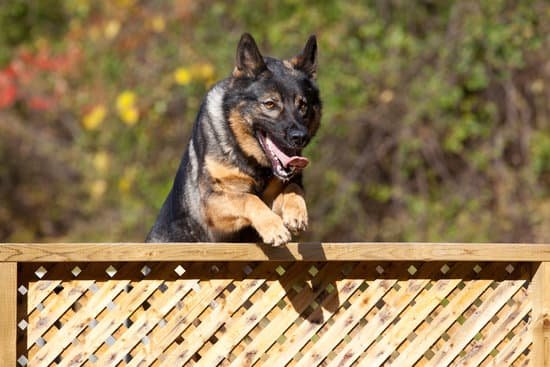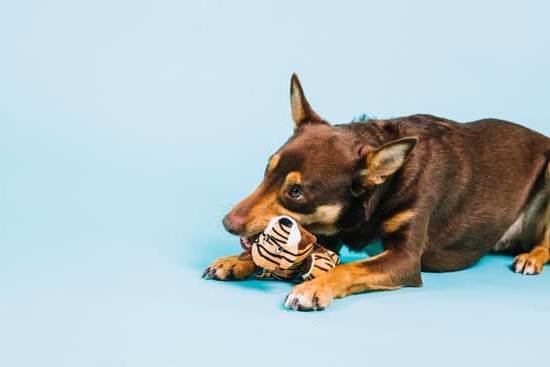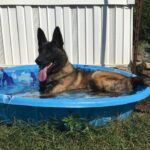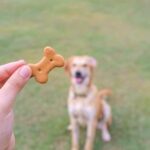Potty training a dog can be a challenging task for many pet owners, but it is an essential part of responsible pet ownership. In this article, we will explore how to potty train a dog fast and easy. From understanding the importance of potty training to practical tips for successful training, we will cover everything you need to know to ensure a smooth and efficient process.
Potty training is not just about preventing accidents in the house; it is also crucial for the overall well-being and happiness of your furry companion. By setting up a potty training schedule and designated areas, you can create a sense of routine and consistency for your dog, making the training process easier and more effective.
Understanding your dog’s behavior is also key to successful potty training. By recognizing the signs that indicate when your dog needs to go, you can proactively guide them to the designated potty areas, reducing the likelihood of accidents inside the house. With positive reinforcement through treats and praise, along with maintaining a regular routine, you’ll be well on your way to achieving success in potty training your dog.
Preparation
When it comes to potty training a dog, preparation is key to success. Setting up a potty training schedule and designated areas for your dog to go is essential in helping them learn where and when they should eliminate.
The first step in this process is to establish a consistent routine for your dog. This means taking them out at the same times every day, such as first thing in the morning, after meals, before bed, and frequently throughout the day.
In addition to a consistent schedule, it’s important to designate specific areas for your dog to go potty. Whether you have a backyard or live in an apartment, choose one or two spots where you want your dog to eliminate.
By consistently bringing them to these areas, you are teaching them where it is appropriate to go potty. Using commands like “go potty” or “do your business” while they are eliminating can also help them understand what is expected of them.
Another aspect of preparation for potty training is being equipped with the right supplies. This may include puppy pads or indoor grass patches if you live in an apartment, as well as poop bags and cleaning sprays for outdoor accidents. Having these supplies on hand will make it easier for you to respond quickly when accidents occur and continue the training process without interruption.
Overall, the preparation phase of potty training sets the foundation for successful learning. With a consistent schedule, designated areas, and necessary supplies in place, you are ready to begin the process of teaching your dog how to potty train fast and easy. By being prepared and committed to the process, you can set yourself and your furry friend up for success in their potty training journey.
Understanding Your Dog’s Behavior
When it comes to potty training your dog, one of the most important aspects is understanding their behavior and recognizing the signs that they need to go. By being attentive to your dog’s cues, you can effectively guide them towards good potty behavior. Here are some common signs that your dog needs to go:
- Restlessness or pacing around the house
- Sniffing or circling a specific area
- Whining or scratching at the door
- Suddenly stopping play or other activities
By paying attention to these signs, you can anticipate when your dog needs to go outside and provide them with the opportunity to do so in the appropriate designated area.
Another important aspect of understanding your dog’s behavior is observing their bathroom habits. Take note of how frequently they typically need to go and at what times of day. This will help you establish a potty training schedule that aligns with your dog’s natural routines.
Additionally, it’s crucial to consider any specific behaviors or signals that are unique to your individual dog. Every pet has its own way of communicating its needs, so take the time to learn and recognize these personalized cues for effective potty training. By understanding your dog’s behavior and being attentive to their needs, you can make the potty training process fast and easy for both you and your furry friend.
Positive Reinforcement
One effective method of positive reinforcement is to use treats as a reward for your dog when they successfully go potty in the designated area. This helps them understand that going potty in the right spot is a positive behavior that brings rewards. Additionally, giving verbal praise such as “good boy/girl” or gentle pets after they go potty can further reinforce the desired behavior.
In addition to treats and praise, it’s important to establish a consistent routine for potty breaks. Take your dog out to their designated potty area at regular intervals, such as first thing in the morning, after meals, and before bedtime. This routine, paired with positive reinforcement, will help your dog learn where and when they are supposed to go potty.
To further emphasize the importance of using positive reinforcement, consider creating a list of “potty rules” for your dog and displaying it in a visible area of your home. This list can include reminders for yourself as well as family members on how to positively reinforce good potty behavior in your dog.
Remember that patience and consistency are key when using positive reinforcement to train your dog, so be sure to stay committed to the process during this time. With these strategies in place, you’ll be on your way to effectively potty training your dog fast and easy.
Consistency Is Key
Maintaining a regular routine is crucial in potty training your dog fast and easy. Consistency helps your dog understand when and where they should go potty, making the training process more effective. Here are some tips on how to establish and maintain a regular routine for potty training your dog.
First, set a feeding schedule for your dog. By feeding them at the same times each day, you can predict when they will likely need to go potty. Typically, dogs need to relieve themselves 30 minutes to an hour after eating or drinking water. By knowing when your dog will likely need to go, you can take them outside at the right times.
Next, designate specific potty areas for your dog. Whether it’s a patch of grass in your yard or a pee pad indoors, having a consistent potty spot will help your dog understand where they should do their business. Take them to this spot every time they need to go, both during scheduled potty breaks and when you notice signs that they need to relieve themselves.
Additionally, make sure to take your dog outside first thing in the morning, after naps, after playtime, and before bedtime. These are common times when dogs need to go potty. By consistently taking them out at these times, you can prevent accidents indoors and reinforce good bathroom habits.
Using these strategies will help you maintain a regular routine for potty training your dog fast and easy.
| Tips for Maintaining a Regular Routine | Benefits |
|---|---|
| Set a feeding schedule | Predictable bathroom breaks |
| Designate specific potty areas | Helps reinforce good bathroom habits |
| Take them out at common times when dogs need to go potty | Prevents accidents indoors and establishes routine |
Handling Accidents
Recognizing the Signs of Accidents
When you’re in the process of potty training your dog, accidents are unfortunately bound to happen. It’s important to recognize the signs that your dog may need to go, such as circling, sniffing, or suddenly becoming restless. By being attentive to these cues, you can be proactive in guiding your dog to the designated potty area and preventing accidents before they occur.
Responding to Accidents
In the event that your dog does have an accident in the house, it’s crucial to respond calmly and promptly. Avoid scolding or punishing your dog, as this can create fear and anxiety around potty training. Instead, gently redirect your dog to the designated potty spot and clean up the mess without making a fuss. This will help your dog understand where they should be eliminating and reduce the likelihood of future accidents in the same area.
Cleaning Up Properly
When cleaning up after an accident, it’s important to use an enzymatic cleaner specifically designed for pet messes. Regular household cleaners may not fully eliminate the odor, leading your dog to revisit the same spot. Additionally, thoroughly clean any bedding or rugs that may have been soiled. By properly cleaning up after accidents, you can effectively communicate to your dog where they should and should not be using as a potty area.
By understanding how to respond and clean up after accidents during potty training, you can help create a positive and effective learning experience for your dog. The key is patience and consistency as you navigate through this phase of training with your furry companion.
Troubleshooting
Identifying the Root of the Problem
When potty training your dog, it’s important to recognize that setbacks and challenges are a normal part of the process. If you notice that your dog is having more accidents than usual or seems to be regressing in their potty training, it’s crucial to try to identify the root cause of the issue.
This could include changes in routine, stress, illness, or even territorial marking. By understanding what may be triggering these setbacks, you can better address the issue and adjust your training approach accordingly.
Reinforcing Good Behavior
During potty training, it’s essential to reinforce positive behavior consistently. If your dog is experiencing setbacks, it’s crucial to go back to basics and provide plenty of praise and treats when they do successfully go potty in the designated area. By reinforcing good behavior with positive reinforcement, you can help your dog regain confidence and motivation in their potty training journey.
Seeking Professional Help
If you find yourself struggling with persistent challenges or setbacks in potty training your dog despite trying various approaches, seeking professional help from a veterinarian or a certified dog trainer may be beneficial. They can provide valuable insight into potential underlying issues and offer personalized strategies to address them effectively.
Remember that every dog is unique, and what works for one may not work for another. Seeking professional guidance can make a significant difference in overcoming hurdles and achieving success in potty training.
By addressing challenges and setbacks with patience, consistency, and understanding, you can navigate through these obstacles effectively while staying committed to the overall goal of fast and easy potty training for your furry friend.
Patience and Persistence
Potty training a dog fast and easy requires patience and persistence. It is important to remember that every dog is different, and the time it takes for them to learn can vary. Here are some tips for staying motivated and committed to the potty training process.
Firstly, it’s essential to stay positive and patient throughout the potty training process. Dogs pick up on their owner’s emotions, so remaining calm and encouraging will help create a positive learning environment. Remember that accidents are a natural part of the learning process, and it’s important not to get discouraged when they occur.
In addition to being patient, consistency is key when potty training a dog. Stick to a regular schedule for feeding, playtime, and bathroom breaks. This will help your dog understand when they should be going outside to relieve themselves. Consistently using the same designated area for potty breaks will also help reinforce good behavior.
Finally, celebrate small victories along the way. When your dog successfully goes potty outside, give them plenty of praise and maybe even a treat. This positive reinforcement will help motivate your dog to continue their good potty habits.
By staying patient, consistent, and positive throughout the potty training process, you can effectively train your dog quickly and easily. Remember that every dog is unique, so be persistent in your efforts and celebrate each step of progress along the way.
Conclusion
In conclusion, potty training a dog fast and easy is possible with the right preparation, understanding of your dog’s behavior, positive reinforcement, consistency, and patience. By setting up a potty training schedule, designating specific areas for pottying, and recognizing the signs that your dog needs to go, you can effectively train your furry friend in no time.
Using treats and praise as positive reinforcement will encourage good potty behavior, while maintaining a regular routine and responding to accidents with patience are essential in the process.
Dealing with challenges and setbacks in potty training is normal, but it’s important to stay motivated and committed to the process. It’s crucial to remember that every dog learns at their own pace and may require different approaches. With persistence and dedication, you can overcome any obstacles that come your way. The key is to celebrate success along the way and enjoy the rewards of having a well-potty trained dog.
In the end, potty training a dog fast and easy takes time and effort but is well worth it when you have a well-behaved furry companion by your side. Remember that consistency is key, and by staying patient throughout the process, you’ll be able to successfully train your dog with love and positivity.
Frequently Asked Questions
How Do You Potty Train a Dog ASAP?
Potty training a dog as quickly as possible requires consistency, patience, and positive reinforcement. Establish a regular schedule for potty breaks, reward good behavior, and clean up accidents without scolding the dog.
How Long Does It Usually Take to Potty Train a Dog?
The time it takes to potty train a dog can vary depending on the breed, age, and individual personality of the dog. On average, it can take anywhere from a few weeks to several months to fully potty train a dog.
How Do You Stop a Dog From Peeing and Pooping in the House?
To stop a dog from peeing and pooping in the house, first make sure there are no underlying medical issues causing accidents. Then establish a consistent routine for potty breaks, supervise the dog closely indoors, and use positive reinforcement when the dog eliminates outside. Consistency is key in preventing indoor accidents.

Welcome to the blog! I am a professional dog trainer and have been working with dogs for many years. In this blog, I will be discussing various topics related to dog training, including tips, tricks, and advice. I hope you find this information helpful and informative. Thanks for reading!





